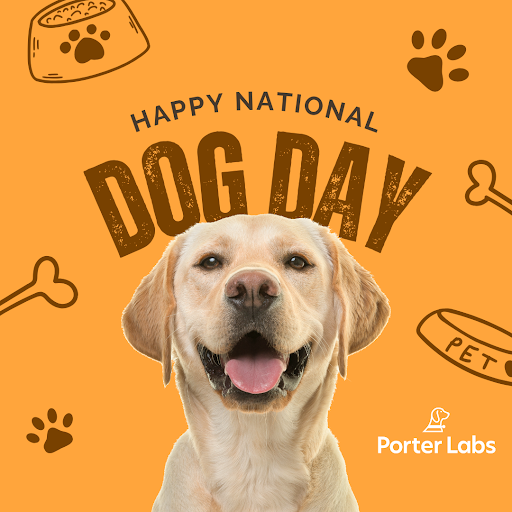“Internet of Things” (IoT) might seem like a quirky term to describe the huge ecosystem of smart gadgets, sensors, and apps that feed us data about our interactions with the world. The phrase was first coined by British technology pioneer Kevin Ashton in 1999 to describe the notion of connecting everyday objects to the internet, enabling them to communicate with each other.
Currently, 14.3 billion smartwatches, fitness trackers, voice assistants, and other devices provide almost instant access to previously hard-to-obtain information. According to Fortune Business Insights, the global IoT market is expected to grow from $662.21 billion in 2023 to a whopping $3,352.97 billion by 2030.
This vast inventory of tech doesn’t just help humans navigate our own lives. The connectivity of IoT also gives us a far clearer look into the half-hidden lives of our pets.
The Animal Internet of Things
Connected pet tech devices are steadily becoming essential gear for many pet owners and pet professionals. Here’s why:
IoT reveals the secret home life of pets
It’s not uncommon for pet owners to assume their dog spends the day contentedly chilling on their bed, until a new home security camera shows their pup engaged in zoomies, staring out windows, and bouncing around on the couch. Or they see the laid-back dog or cat they bid goodbye to each morning pacing or howling in loneliness once the front door closes. Cat owners are flabbergasted when the GPS tag they attach to their furtive feline’s collar reveals that they are leading a double life at a neighbor’s house. IoT helps us glimpse what pets are really doing – not what we think they are doing – and deepens our understanding of what they really need to stay engaged and happy.
IoT-enabled devices aren’t limited to monitoring pets
Some help us fill our pet’s home life with a bit of fun or intrigue. We can program a smart bowl to dole out small meals throughout the day to help bust pet boredom. Interactive devices let us talk to or play remotely with our pets. Some devices let us toss a treat or draw pets into a game with an app-controlled toy. If a smart collar reveals that our dog barks the most around 1 PM, we can arrange a daily visit from a pet sitter or dog walker.
So, while the Internet of Things is indeed made up of a lot of cool “things” that gather, analyze, and share tons of data, it’s how we use that information to actively enrich our pets’ lives that directly impacts their health and happiness.
IoT can help pets tell their veterinarian where it hurts
Smart collars or harnesses catch excessive scratching and licking, panting, elevated heart rate, an increase or decrease in activity, and more. A smart cat litter box records how often a cat with urinary issues is visiting their box. Instead of a veterinarian having to rely on observations from a single clinic visit, IoT devices can provide pet health data collected over days, weeks, or months. Pet owners can download and send a data report from their pet health app to their veterinarian to aid in diagnosis.
IoT-enhanced devices connect us to more than just an awesome volume of data. They grant us a window into what our pets are really doing and might actually be feeling. We can then give them the care and enrichment they need to be safe, happy, and engaged.
PupStation by Porter Labs is at home within the Internet of Things
Even though Porter – our Labrador Retriever mascot, namesake, designated product tester, and best friend of our founder Karthik – obviously gets to spend a lot of time with us here at Porter Labs, he was originally quite stressed when Karthik was too busy for play or training sessions.
Porter’s need to work his busy brain inspired our development of PupStation, an IoT training and entertainment platform for dogs. The integrated collar, feeder, and optional range-extending satellites use the power of AI to customize training lessons, which can include everything from practical obedience skills to fun tricks to games, for each individual canine. PupStation can also help improve the lives of people and their pups by redirecting our canine companions away from undesirable behaviors, such as chewing on furniture or chasing cats, and keeping them occupied while they are alone.
Porter initially started using the PupStation prototype while Karthik was with him, but soon started using it when he was alone, too, discovering that PupStation was fun because it kept both his mind and body busy.
We know other dog parents experience similar worries about falling short on play and training time. With PupStation, the learning power of AI can customize activities for dogs and help resolve or even eliminate behavioral issues caused by boredom and lack of training. PupStation will turn any home into an interactive play and learning zone that makes life happier for pets and their people too.
Stay updated on pet tech, learn more about PupStation, and be the first to know when it goes live by following us on Facebook!




